10/06/2017 – As we celebrated the Day of Portugal, Camões, and the Portuguese Communities, some of you may wonder how exactly Portugal was able to form and maintain independence, on a little corner of western Europe, over 800 years. That is what you are going to discover in the course of this series of articles.
As many of you may or may not know, after the fall of the Roman Empire, in 467 C.E, so-called “barbarians” occupied the Iberian Peninsula, more precisely the Gothic tribe of the Visigoths that established itself around Toledo, and the Germanic tribe of the Suebi that occupied the Roman province of Galicia.
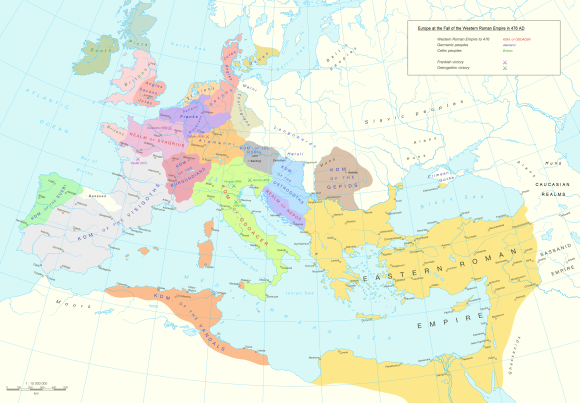
Political scene at the fall of the Roman Empire 476 C.E. In grey the territory of the Visigoths going form Southern France to most of Spain. In green the territory of the Suebi, settled in the Roman Province of Gallaecia.
Map by: Guriezous in Europe and the Near East at 476 AD
The Visigoths eventually came to a dominant position in Iberia and defeated the Suebi “unifying” the peninsula. I used quotation marks because actual total conquest of Iberia was only achieved when the peoples of Asturias decided to push down and conquer the Iberian Lands. The motive of this is the extreme hardiness of the Asturian Terrain that provided an excellent defense to the natives, and so no one actually conquered the Asturians, not the Romans, nor the Visigoths, nor the Moors.
However, this Visigothic kingdom would soon collapse, the huge internal struggles fruit of a very powerful aristocracy divided the kingdom to a breaking point. So when the Moors, in 711 C.E, under the banner of the Umayyad Caliphate crossed the Strait of Gibraltar, the Visigothic Kingdom provided no match for the utmost zeal and combat ability of the Islamic troops.
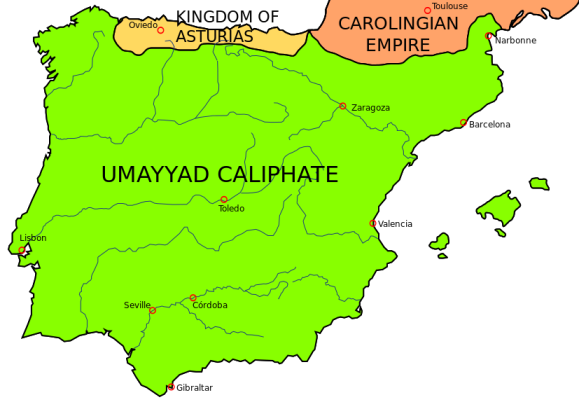
Islamic Conquest of the Iberian Peninsula. Note that some of the territories shown as occupied above the Douro River (west of Zaragoza) were never fully occupied.
By little professor in The province of al-Andalus in 750
The Muslim conquerors established a political foothold in Europe with the conquest of Iberia, and so they organized themselves around the city of Cordoba and tried to push even forward into Western Europe by advancing on the territories of the Franks. However, one skilled warrior and politician would stop them, that being Charles Martel, who’s life I covered in my previous article.
After the failure of the expedition in the Frankish kingdom and the great stir that the Great Berber Revolt had on the Muslim Province of Al-Andalus, the goal became consolidating Iberia, not expanding.
Eventually, the Umayyad Dynasty’s rule in the Arabian Empire came to an end, toppled by the Abbasid Dynasty. However, this did not dictate the end of the Umayyads as Abd al-Rahman I, a member of this family, refused to recognize the Abbasid Authority and declared himself as an independent Emir in the Iberian Peninsula.
Likewise, the Muslim rule in Iberia did not last for long as the Asturians, and even the Franks to a lesser degree started to expand their borders south. For the first time, the Asturian Peoples were giving up their ground to conquer new lands. This time they were the conquerors, not the conquered.
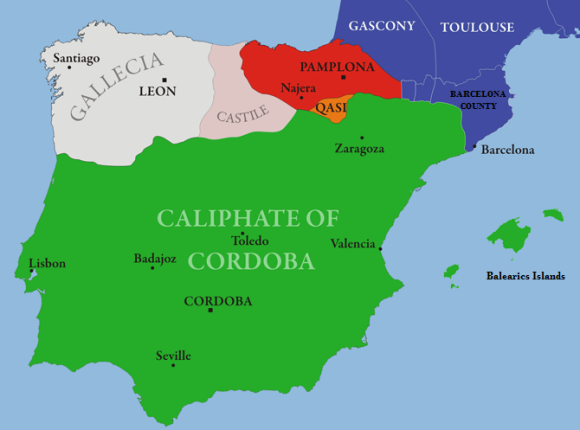
The expansion of the once oppressed Asturians and the Franks (Blue).
By Alexandre Vigo in Al-Andalus and Christian kingdoms circa 1000 AD
This conquest came to an apogee with the Leonese Ruler Ferdinand I “The Great” that established himself as the first Emperor of Spain conquering vast swaths of land from the Moors. The Leonese easiness in conquering the Muslim territory was due to a great revolt in the Ummayad lands that created many smaller kingdoms that competed for supremacy. It was this infighting that led to a significant drawback on the part of the Moors and is known as the period of the Taifa Kingdoms.
As Ferdinand, I “The Great.” of León died in 1065 the Empire was divided between his three sons: Garcia, Sancho, and Alfonso. The first received the kingdom of Galicia, the second the kingdom of Castille and the third received the kingdom of León. Moreover, no sooner they would start competing for power.
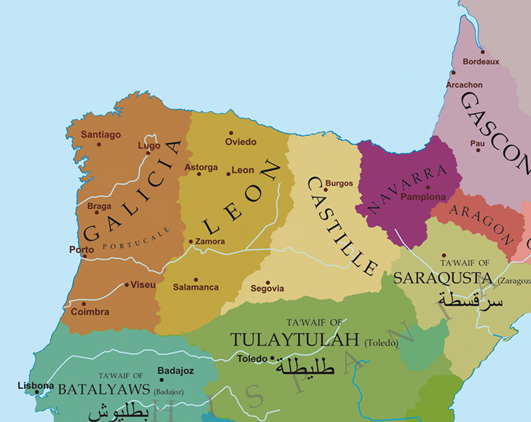
Division of the Leonese kingdom by Ferdnidad I between his sons. Orange – Garcia; Dark Yellow Alfonso; Beige – Sancho.
By Alexandre Vigo in Mapa político do noroeste da Península Ibérica a finais do século XI.
Being brothers did not keep them from infighting and as Garcia was exiled and Sancho died the now Alfonso VI of León unified, once again, the Cristian lands of Northern Hispania.
However, a much bigger threat would rise to defy Alfonso’s power as the Empire of the Almoravids, who had been expanding in Morocco, invaded Iberia reconquering much of what was conquered south of the Douro River.
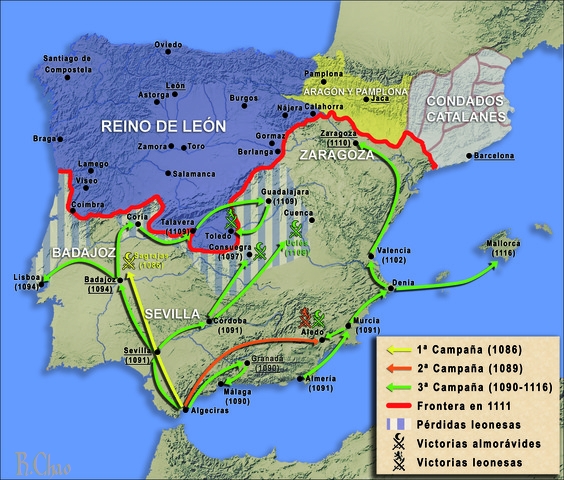
Alfonso VI’s kingdom facing the Almoravid’s invasions. The Blue stripes represent the lost Leonese territories during the invasions.
By R. Chao in El reino de León ante las invasiones almorávides.
As such, Alfonso looked for external help. Two of the powers most interested in this development were the papacy in Rome, and the Franks as the Almoravid conquest posed a threat to Christianity, and the Latin Europe. Furthermore, Alfonso was married to Hugh of Burgundy’s daughter Constance, and these two sought to attract more French knights to Iberia.
Two of the many French knights who came to defend Christianity were Raymond and Henry of Burgundy. Raymond married Alfonso’s daughter Urraca and received the title of the kingdom of Galicia. Thus, Raymond swore vassalage to Alfonso and was tasked with defending the lands of Portucale from the Almoravids.
Raymond did not succeed in protecting Portucale from constant Almoravid attacks who conquered Lisbon in 1094. Thus, Alfonso VI gave the county to Raymond’s brother, Henry, separating it from Galicia who stayed with Raymond, and sealing an alliance by giving his daughter, Teresa, hand in marriage.
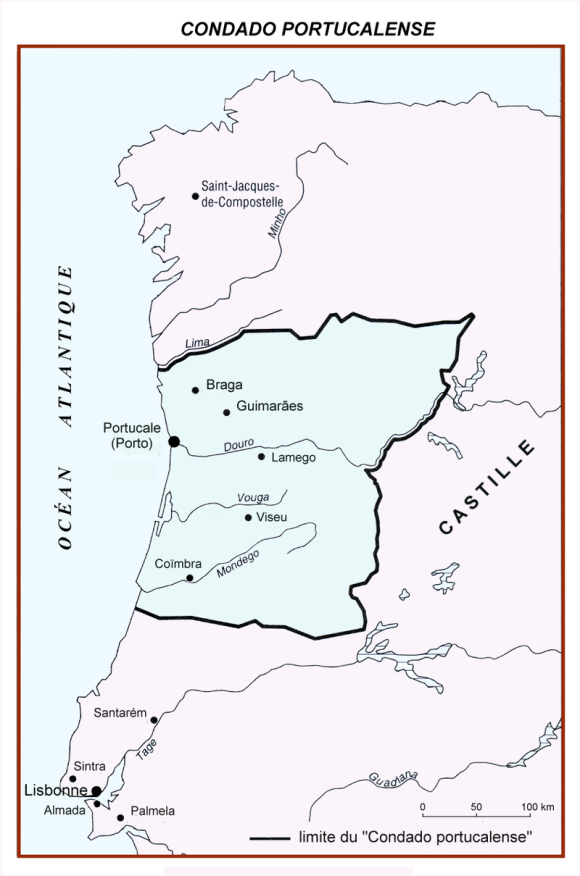
County of Portucale during Henry of Burgundy’s rule.
By Basilio in Location of Portugal
This concession was the beginning of the Portuguese separation from the rest of the Spanish Territories, who would only actually start with Henry’s son Alfonso, also know as Alfonso “Henriques” I of Portugal.
Buy books of Portuguese History here:

Sources:
Mattoso, J. (1997). História de Portugal – Antes de Portugal. Lisboa: Editorial Estampa. ISBN 972-33-1261-1
Rui Ramos, B. V. (2009). História de Portugal. Lisboa: A esfera dos livros. ISBN 978-989-626-366-9
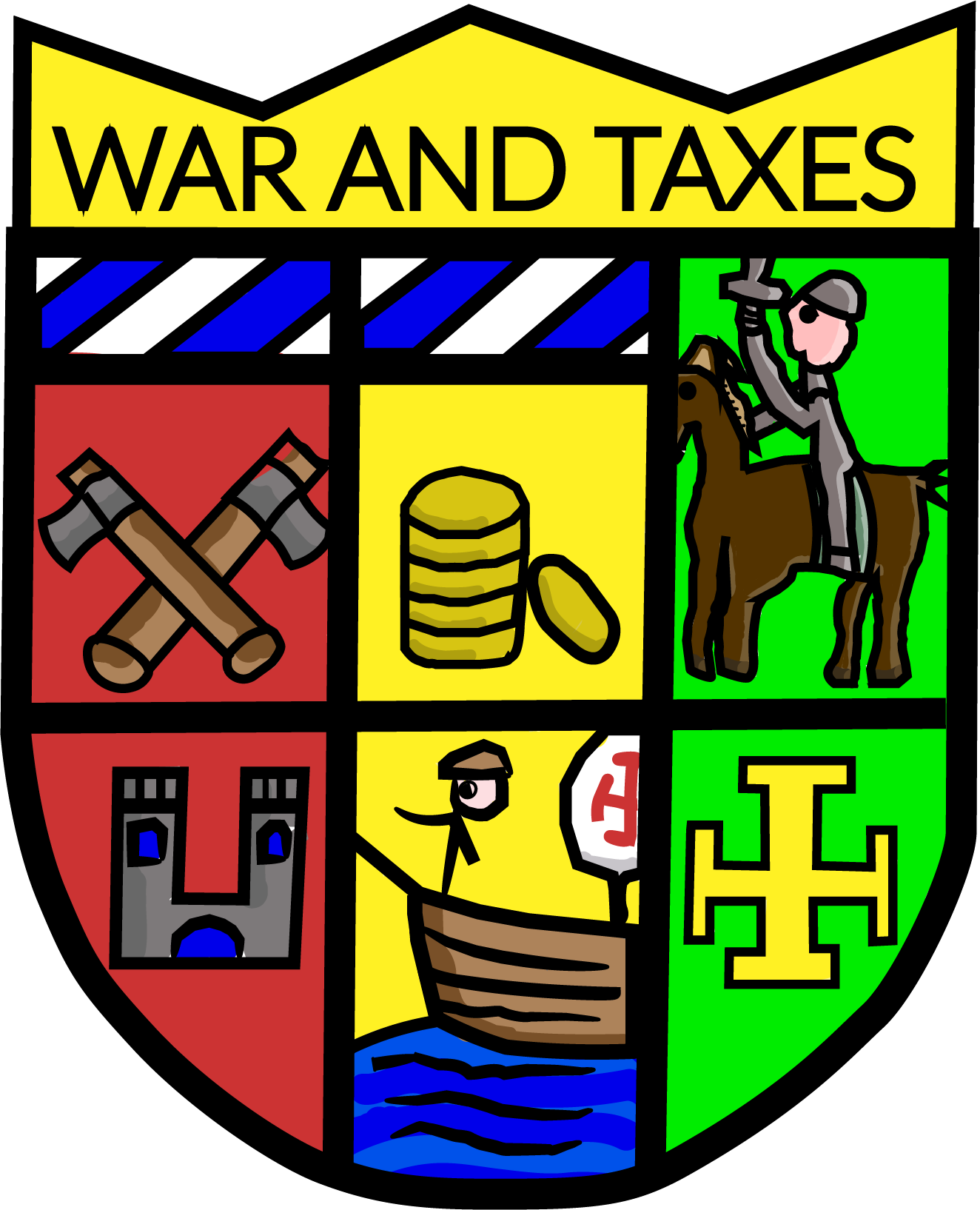

3 replies on “Building of a Nation: Political History of Portugal – Part 1”
[…] Furthermore, he sought to expel the Muslim menace from the Iberian Peninsula, and as such made several campaigns into the Islamic territories. Those resulted in the conquest of the March of Barcelona (Marca Hispanica), in 801, which I briefly mentioned in this article. […]
LikeLike
[…] In the last article, we left off on the political ascension of Henry as Count of Portugal, as his brother Raymond of Burgundy proved to be a weak military leader who was not able to contain the Almoravid’s offensive. […]
LikeLike
[…] fanatic Islamic group from northern Africa, was invading Iberian lands in the same objective as the Almoravids before: conquer the Christian Lands and expand Islamic […]
LikeLike